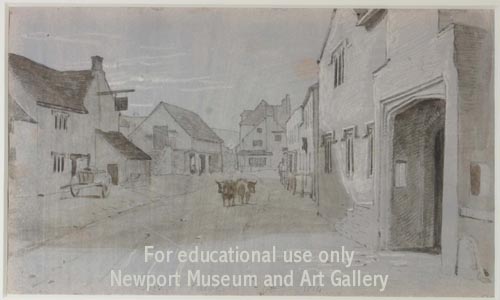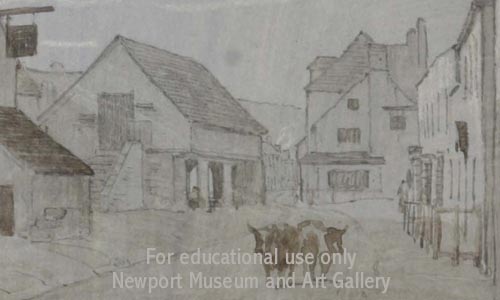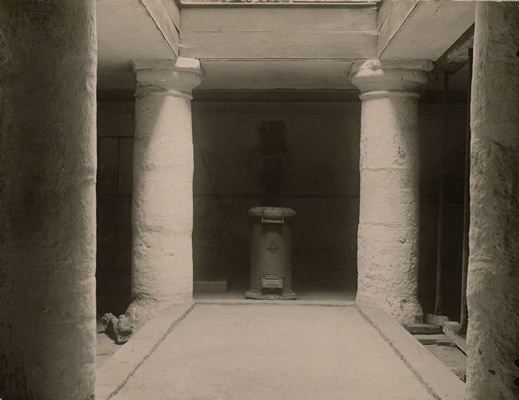The open sided
downstairs would have been been let for market stalls selling produce
such as corn, milk, cheese, eggs, meat, animal skins, leather and
wool. In addition cattle and sheep may have been bought and sold
in the square - maybe this is why many of the buildings have railings
in front.
The upper floor,
accessed by the exterior steps, was most likely a court room and
also used for important meetings.
It is not known
when the first market hall was built here. The first mention so
far found in the records dates back to 1622 when Philip Hughes held
land 'near the Cross of Caerleon' for building a 'handsume and convenient
market house'. However it is recorded that markets were held in
Caerleon as far back as 1296. We even know when the markets were
held in 1370 - every Thursday, and two fairs yearly on All Saints
Day and the Tuesday after Holy Trinity. (See
article by E. Kennerley which includes references)
The Universal
British Directory for 1791 stated Caerleon at present is
but an indifferent market-town, having a long wooden bridge over
the Usk, with a weekly market on Thursday, which is in general well
supplied. There is also a small market on Saturday for butchers
meat. It has three fairs in the year, viz. May 1, July 21, and September
20; and also a cattle and pig-market the second Monday in every
month. Pigot's
1844 directory also refers to Caerleon being a market town and
lists the market days.
Around the
middle of the 19th Century interest was growing in the many Roman
finds made in and around Caerleon. In 1848 Sir Digby Mackworth,
owner of the market hall, suggested that the ground floor be closed
in and turned into a museum to house these artefacts. The owners
of the premises around the square were totally against this proposition
and together they raised £80 for the ground where the building
stood in order that the area remained 'an open space forever'.
The market
hall was demolished and some of the building material was reused
for the construction of a museum (on the site of the present Roman
Legion Museum) at the end of Bakehouse Lane later renamed Museum
Street. Most notable of the recycled stone were the four stout columns,
thought to be Roman in origin - or part Roman. They were utilised
in the basement to support the ground floor (see pictures below).




